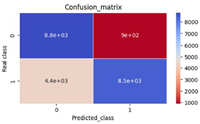Relativistic light clocks: Arbitrary orientation in uniform motion and hyperbolic motion analysis
Abstract
In this paper, we address the general case of a light clock in uniform translational motion parallel to itself and perpendicular to its uniform velocity v, as well as the case of the light clock in relativistic hyperbolic motion. Neither case has been previously addressed in the specialized literature, which typically restricts itself to canonical orientations where the light clock moves parallel to either the vertical or horizontal axis with uniform velocity, without acceleration. Therefore, it becomes interesting to study the more general case where the clock has an arbitrary orientation and/or is accelerated. Our paper is divided into two main sections. The first section deals with the light clock moving with constant velocity, oriented at an arbitrary angle with respect to the x-axis. We prove that the moving clock exhibits a standard time dilation, identical to that of a light clock moving in a canonical orientation. The second section deals with the light clock moving with constant acceleration, i.e., in hyperbolic motion. For the light clock in hyperbolic motion, we derive the period as measured from the perspective of an inertial frame and draw parallels with the case of uniform motion, outlining a term that is similar (but not identical) to the γ factor of uniform motion. We also point out that this factor depends not only on acceleration but also on the height of the light clock. This dependency on the dimension of the light clock distinguishes the accelerated case from the case of uniform motion. The first three sections deal with the theoretical aspects of light (optical) clocks, while the fourth section addresses the experimental implementations of optical clocks.
References
[1]Sfarti A. Light Clock Behavior Explained via Relativistic Aberration of Light. Journal of Progress in Engineering and Physical Science. 2023; 2(4): 10-11. doi: 10.56397/jpeps.2023.12.03
[2]Langevin P, Bauer E. Cinematic Relativity (French). Actual, Sci. Ind. 1932; 40.
[3]Sfarti A. Application of Particle Accelerators for the Experimental Measurement of Relativistic Length Contraction. International Journal of Nuclear Energy Science and Technology. 2012; 7(1): 1. doi: 10.1504/ijnest.2012.046969
[4]Vessot RFC, Levine MW, Mattison EM, et al. Test of Relativistic Gravitation with a Space-Borne Hydrogen Maser. Physical Review Letters. 1980; 45(26): 2081-2084. doi: 10.1103/physrevlett.45.2081
[5]Vessot RFC, Levine MW. A Test of the Equivalence Principle Using a Space-Borne Clock. General Relativity and Gravitation. 1979; 10(3): 181-204. doi: 10.1007/bf00759854
[6]Taylor J. Astronomical and Space Experiments to Test Relativity. In: Ashtekar A, Berger BK, Isenberg J, Maccallum M (editors). General Relativity and Gravitation: A Centennial Perspective. Cambridge University Press; 1987. p. 214.
[7]Desloge EA. Nonequivalence of a Uniformly Accelerating Reference Frame and a Frame at Rest in a Uniform Gravitational Field. American Journal of Physics. 1989; 57(12): 1121-1125. doi: 10.1119/1.15802
[8]Desloge EA. The Gravitational Red Shift in a Uniform Field. American Journal of Physics. 1990; 58(9): 856-858. doi: 10.1119/1.16349
[9]Sfarti A. General Clocks and the Clock Hypothesis. Theoretical Physics. 2017; 2(4): 188-193. doi: 10.22606/tp.2017.24005
[10]Uggerhøj UI, Mikkelsen RE, Faye J. The Young Centre of the Earth. European Journal of Physics. 2016; 37(3): 035602. doi: 10.1088/0143-0807/37/3/035602
[11]Cheng TP. Relativity, Gravitation and Cosmology: A Basic Introduction. Oxford Master Series in Physics. OUP Oxford; 2010. p. 72.
[12]Hassani S. From Atoms to Galaxies: A Conceptual Physics Approach to Scientific Awareness. CRC Press; 2011. p. 433.
[13]Topper D. How Einstein Created Relativity out of Physics and Astronomy (Illustrated ed.). Springer Science & Business Media; 2012. p. 118.
[14]Auping JA. Proceedings of the International Conference on Two Cosmological Models. Plaza y Valdes; 2010.
[15]Kogut JB. Introduction to Relativity: For Physicists and Astronomers(Illustrated ed.). Academic Press; 2012. p. 112.
[16]Bennett J. What is Relativity?: An Intuitive Introduction to Einstein’s Ideas, and Why They Matter (Illustrated ed.). Columbia University Press; 2014. p. 120.
[17]Keeton K. Principles of Astrophysics: Using Gravity and Stellar Physics to Explore the Cosmos (Illustrated ed.). Springer; 2014. p. 208.
[18]Taylor EF, Wheeler JA. Exploring Black Holes. Addison Wesley Longman; 2000.
[19]Richard W. Simply Einstein. W W Norton & Co; 2003. p. 216.
[20]Chou CW, Hume DB, Rosenband T, et al. Optical Clocks and Relativity. Science. 2010; 329(5999): 1630-1633. doi: 10.1126/science.1192720
[21]Shapiro II, Reasenberg RD, MacNeil PE, et al. The Viking Relativity Experiment. Journal of Geophysical Research. 1977; 82(28): 4329-4334. doi: 10.1029/js082i028p04329
[22]Thornton ST, Rex A. Modern Physics for Scientists and Engineers, 3rd ed. Thomson, Brooks/Cole; 2006. p. 552.
[23]Rizos C. GPS Satellite Signals Archived 2010-06-12 at the Wayback Machine. University of New South Wales; 1999.
[24]Pogge RW. Real-World Relativity: The GPS Navigation System. https://www.astronomy.ohio-state.edu/pogge.1/Ast162/Unit5/gps.html (accessed on 1 December 2023).
[25]Drake SP. The Equivalence Principle as a Stepping Stone from Special to General Relativity: A Socratic Dialog. American Journal of Physics. 2006; 74(1): 22-25. doi: 10.1119/1.2135316
[26]Ashby N. Relativity and GPS. Physics Today; 2002.
[27]Cerruti AP, Kintner PM, Gary DE, et al. Effect of Intense December 2006 Solar Radio Bursts on GPS Receivers. Space Weather. 2008; 6(10). doi: 10.1029/2007sw000375
[28]Aarons J, Basu S. Ionospheric Amplitude and Phase Fluctuations at the GPS Frequencies. Proceedings of ION GPS. 1994; 2: 1569-1578.
[29]Mancuso S, Raymond JC. Coronal Transients and Metric Type II Radio Bursts. I. Effects of Geometry, Astronomy and Astrophysics. 2004; 413: 363-371. doi: 10.1051/0004-6361:20031510
[30]Ledvina BM, Makela JJ, Kintner PM. First Observations of Intense GPS L1 Amplitude Scintillations at Midlatitude. Geophysical Research Letters. 2002; 29(14). doi: 10.1029/2002gl014770
[31]Faraoni V. Special Relativity (Illustrated ed.). Springer Science & Business Media; 2013. p. 54.
[32]Grewal MS. Weill LR, Andrews AP. Global Positioning Systems, Inertial Navigation, and Integration. John Wiley & Sons; 2001.
[33]Parkinson S. The Global Positioning System. American Institute of Aeronautics & Astronomy; 1996.
[34]Markus P. From Light Clocks to Time Dilation. Einstein Online Band. 2021; 13: 1004.
[35]Puri A. Einstein Versus the Simple Pendulum Formula: Does Gravity Slow All Clocks? Physics Education. 2015; 50(4): 431-435. doi: 10.1088/0031-9120/50/4/431
[36]Reinhardt S. Test of Relativistic Time Dilation with Fast Optical Atomic Clocks at Different Velocities. Nature Physics. 2007; 3(12): 861-864.
[37]Rossi B, Hall DB. Variation of the Rate of Decay of Mesotrons with Momentum. Physical Review. 1941; 59(3): 223-228. doi: 10.1103/physrev.59.223
[38]Hasselkamp D, Mondry E, Scharmann A. Direct Observation of the Transversal Doppler-shift. Zeitschrift für Physik A Atoms and Nuclei. 1979; 289(2): 151-155. doi: 10.1007/bf01435932
[39]Crowell B. The Modern Revolution in Physics (Illustrated ed.). Light and Matter; 2000. p. 23.
[40]Serway RA, Moses CJ, Moyer CA. Modern Physics, 3rd ed. Cengage Learning; 2004. p. 21.
[41]D’Auria R, Trigiante M. From Special Relativity to Feynman Diagrams: A Course of Theoretical Particle Physics for Beginners (Illustrated ed.). Springer Science & Business Media; 2011. p. 541.
[42]Ohanian HC, Ruffini R. Gravitation and Spacetime, 3rd ed. Cambridge University Press; 2013. p. 176.
[43]Hawley JF, Holcomb KA. Foundations of Modern Cosmology (Illustrated ed.). Oxford University Press; 2005. p. 203.
[44]Mohazzabi P, Luo Q. Has the Twin Paradox Really Been Resolved? Journal of Applied Mathematics and Physics. 2021; 09(09): 2187-2192. doi: 10.4236/jamp.2021.99138
[45]Debs TA, Redhead MLG. The Twin “Paradox” and the Conventionality of Simultaneity. American Journal of Physics. 1996; 64(4): 384-392. doi: 10.1119/1.18252
[46]Miller AI. Albert Einstein’s Special Theory of Relativity. Emergence (1905) and Early Interpretation (1905-1911). Reading: Addison-Wesley; 1986. pp. 257-264.
[47]Max J. Concepts of Simultaneity: From Antiquity to Einstein and Beyond. The Johns Hopkins University Press; 2006. p. 165.
[48]Schutz B. Gravity from the Ground Up: An Introductory Guide to Gravity and General Relativity (Illustrated ed.). Cambridge University Press; 2003. p. 207.
[49]Halliday D, Resnick R. The Fundamentals of Physics. John Wiley & Sons; 1997.
[50]Kennedy JB. Space, Time and Einstein: An Introduction (Revised ed.). Routledge; 2014. p. 39.
[51]Mould RA. Basic Relativity (Illustrated, Herdruk ed.). Springer Science & Business Media; 2001. p. 39.
[52]Minguzzi E. Differential Aging From Acceleration: An Explicit Formula. American Journal of Physics. 2005; 73(9): 876-880. doi: 10.1119/1.1924490
[53]Sardesai PL. Introduction to Relativity. New Age International; 2004. pp. 27-28.
[54]Ohanian H. Special Relativity: A Modern Introduction. Physics Curriculum and Instruction; 2001.
[55]Harris R. Modern Physics. Pearson Addison-Wesley; 2008.
[56]Rindler W. Introduction to Special Relativity. Oxford University Press; 2006.
[57]Weidner R. Physics. Needham Heights. Allyn and Bacon; 1985.
[58]Sfarti A. Relativity Solution for “Twin Paradox”: A Comprehensive Solution. Indian Journal of Physics. 2012; 86(10): 937-942. doi: 10.1007/s12648-012-0147-6
[59]Ji AC, Liu WM, Song JL, et al. Dynamical Creation of Fractionalized Vortices and Vortex Lattices. Physical Review Letters. 2008; 101(1). doi: 10.1103/physrevlett.101.010402
[60]Liang ZX, Zhang ZD, Liu WM. Dynamics of a Bright Soliton in Bose-Einstein Condensates with Time-Dependent Atomic Scattering Length in an Expulsive Parabolic Potential. Physical Review Letters. 2005; 94(5). doi: 10.1103/physrevlett.94.050402
[61]Qi R, Yu XL, Li ZB, et al. Non-Abelian Josephson Effect between TwoF=2Spinor Bose-Einstein Condensates in Double Optical Traps. Physical Review Letters. 2009; 102(18). doi: 10.1103/physrevlett.102.185301
[62]Ball P. Precise Atomic Clock May Redefine Time. Available online: https://www.nature.com/articles/nature.2013.13363.pdf (accessed on 1 March 2024).
[63]Marti GE, Hutson RB, Goban A, et al. Imaging Optical Frequencies with 100 μHz Precision and 1.1 μm Resolution. Physical Review Letters. 2018; 120(10). doi: 10.1103/physrevlett.120.103201
[64]Pedrozo-Peñafiel E, Colombo S, Shu C, et al. Entanglement on an Optical Atomic-clock Transition. Nature. 2020; 588(7838): 414-418. doi: 10.1038/s41586-020-3006-1
Copyright (c) 2024 Adrian Sfarti

This work is licensed under a Creative Commons Attribution 4.0 International License.











